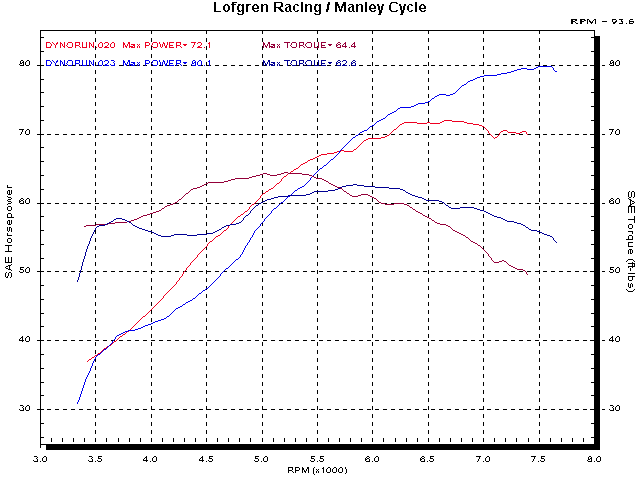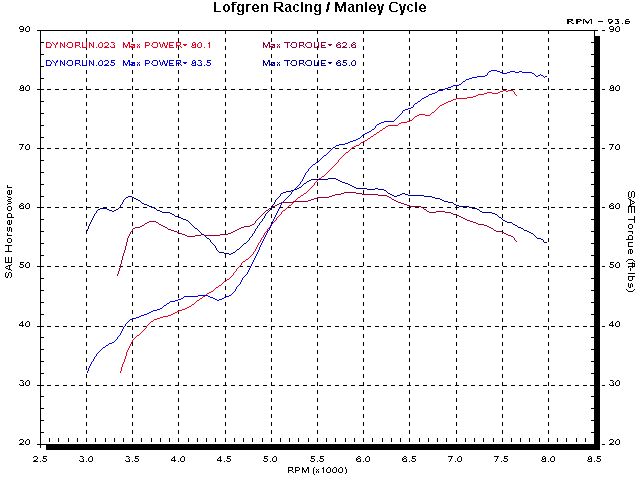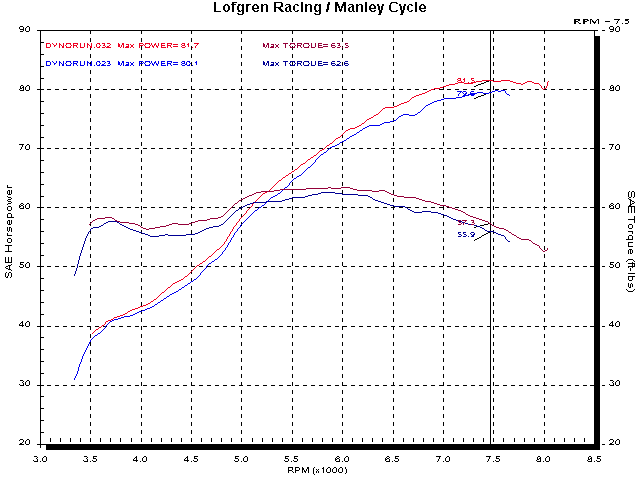
More Moto Guzzi Exhaust System Testing
After I had posted the previous 2 MotoGuzzi reports, I didn't see Bob Kolstad for a while. I was a little concerned that he might be miffed about my subsequent findings.
Bob had read the reports but decided to just ride the bike until he figured out which direction he'd go with exhaust.
Recently, he came up with a Stucchi cross-over and the dyno sheet supplied by the distributor or manufacturer. The chart showed equal peak power to the stock system with a smoother torque curve all of the way through the rev band.
Two points need to be made here. Kolstad's bike is a V11 Sport, and Will Creedon has been taking an Italian language course and says that Stucchi should be pronounced Stooki, the H makes the C hard.
I was a little skeptical, but then I'm usually skeptical about everything. The junction is located in front of the muffler hanger, and appeared to extend the head pipes just as long as the previous cross-over did.
Curiosity overcame me and I had to put it on the dyno this morning to find out.
A little configuration information might be in order.
The bike has had the air-box removed and K&Ns installed. It has the Stucchi cross-over into Mistral mufflers. I had created a custom map for the bike with the Mistral cross-over. If it gained any HP/RPM it would be a little lean at the top, but there's no need to worry, since I'm starting with a known, good, air/fuel ratio.
The red trace is the last run from the mapping session, the blue is the first series with the Stucchi cross-over.

Things are looking pretty good. There is just a hint of the stock dip at 4500 RPM and the improvement at 7500. Since I didn't test Bob's bike with the stock cross-over, I don't have a comparison run. I do have a run with John Schneider's bike, but keep in mind that each bike is a little different in it's capabilities, so I'll show the two together only to compare the torque curves RPM points.

The red trace is Bob's with the Stucchi x-over and the blue is Schneider's with the stock resonator and Agostini mufflers.
You will notice that the 4500 RPM dip is less pronounced with the Stucchi. The top-end is abbreviated from closing the throttle.
The testing isn't over. Now I have to change the map for the new cross-over. At least there seems to be a reason to spend the time.
After some fuel and timing adjustments I got the result below. The red trace is the final run.

The smoother curve of the red trace (from 6200 to 7200) is due to better air/fuel ratio. Most of the overall increase is due to the timing adjustments.
Finally, a comparison between the Stucchi and the stock resonator. The blue trace is John Schneider's which uses the stock resonator and stock air-box. The blue trace might be showing signs of air-box resonance, at 5500 and 7500.

The differences in peak power may be caused by the components or the two engines may be a couple HP apart. I don't feel confident saying which of the two configurations is best for peak power, but I will say that the Stucchi cross-over doesn't lower the peak power RPM point like another cross-over I've tested.
The mapping changes have added to the power and torque as well as improving the drivability.